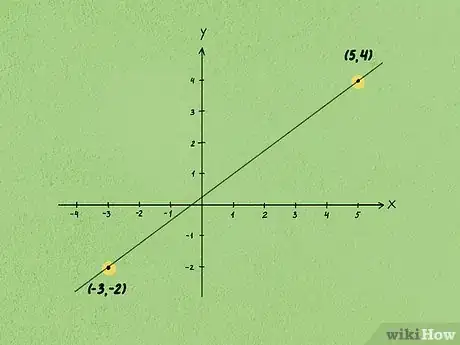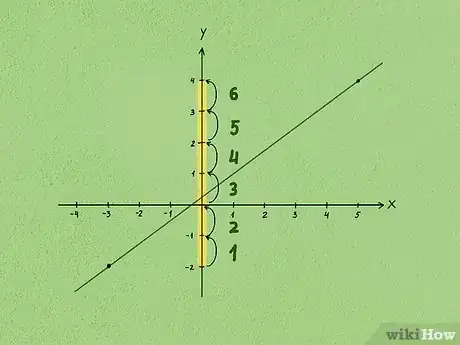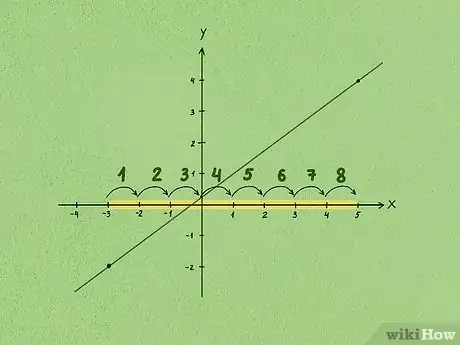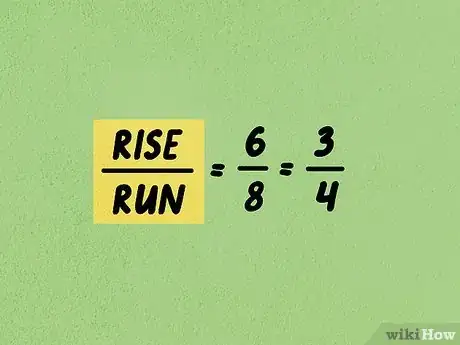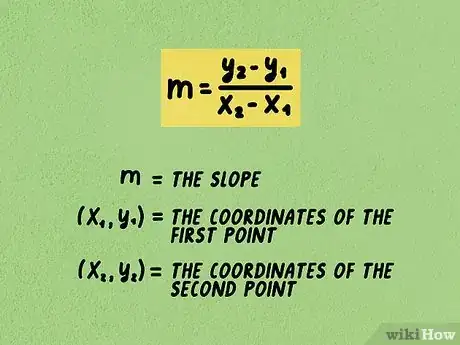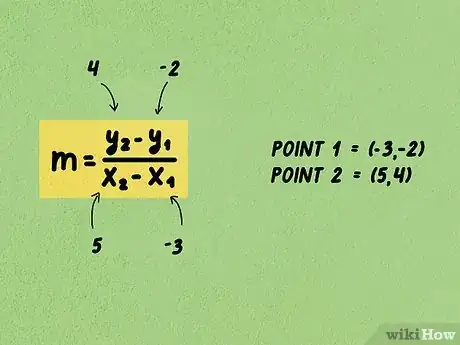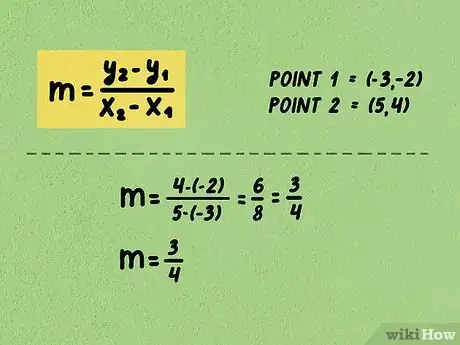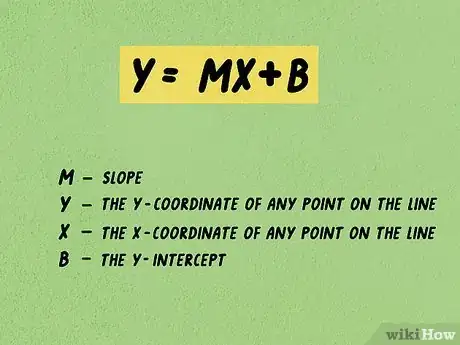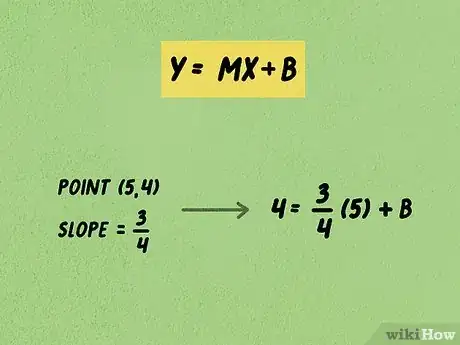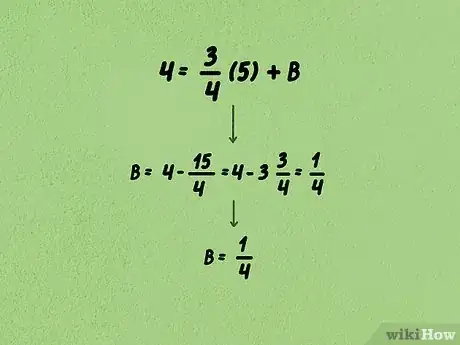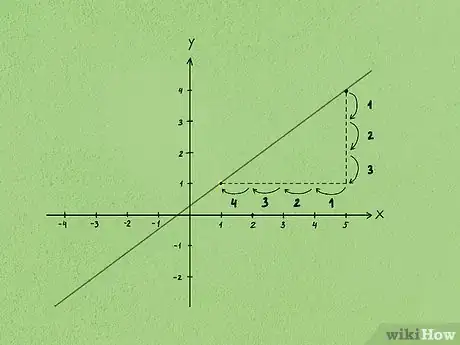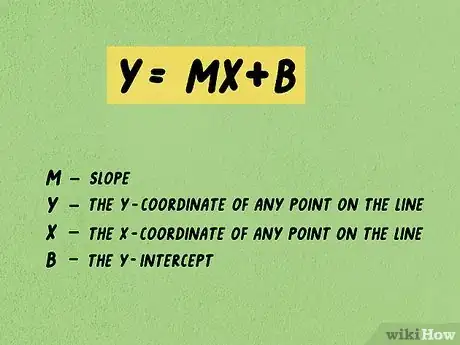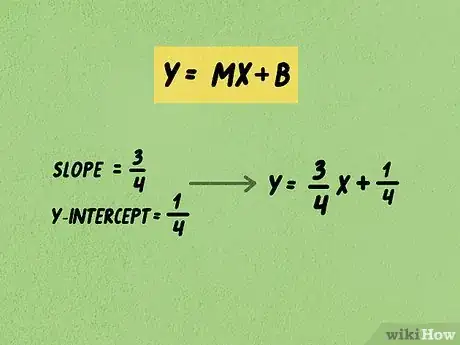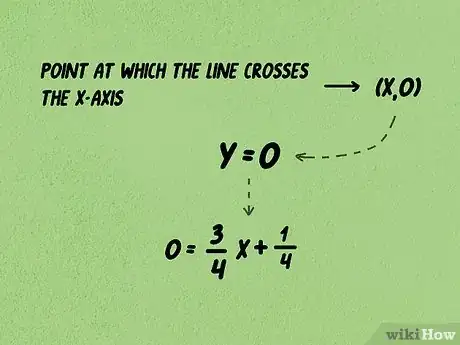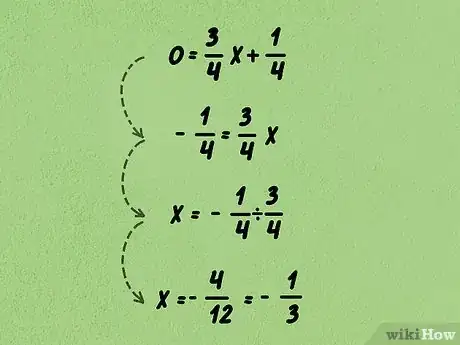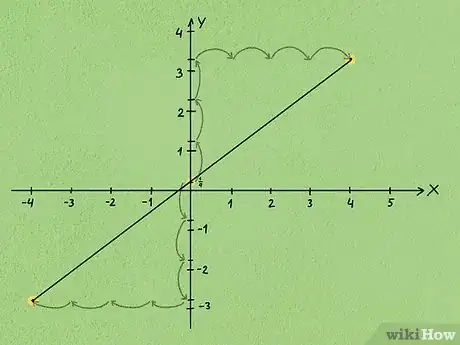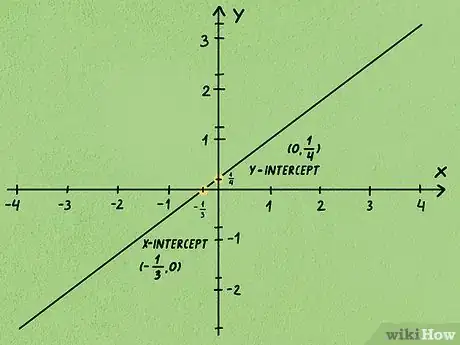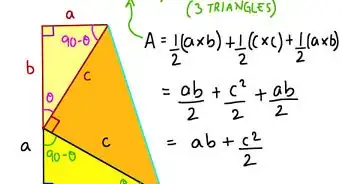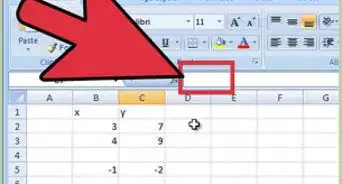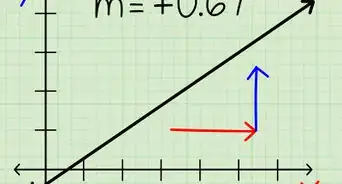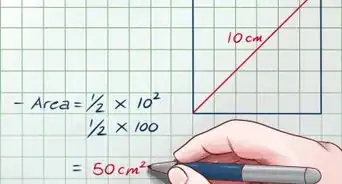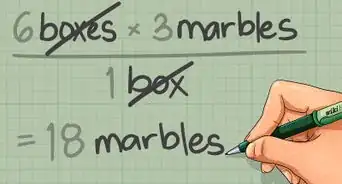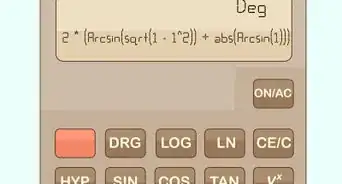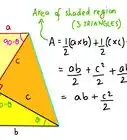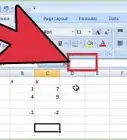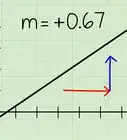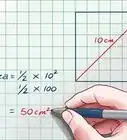This article was co-authored by Grace Imson, MA. Grace Imson is a math teacher with over 40 years of teaching experience. Grace is currently a math instructor at the City College of San Francisco and was previously in the Math Department at Saint Louis University. She has taught math at the elementary, middle, high school, and college levels. She has an MA in Education, specializing in Administration and Supervision from Saint Louis University.
There are 8 references cited in this article, which can be found at the bottom of the page.
This article has been viewed 355,328 times.
The slope of a line measures how steep the line is. [1] You could also say it is the rise over the run; that is, how much the line rises vertically compared with how much it runs horizontally. Being able to find the slope of a line, or using the slope to find points on the line, is an important skill used in economics, [2] geoscience, [3] accounting/finance and other fields.
Steps
Using a Graph to Find the Slope
-
1Pick two points on the line. Draw dots on the graph to represent these points, and note their coordinates.
- Remember when graphing points to list the x-coordinate first, then the y-coordinate.
- For example, you might choose the points (-3, -2) and (5, 4).
-
2Determine the rise between the two points. To do this, you must compare the difference in y of the two points. Begin with the first point, the point that is the farthest left on the graph, and count up until you reach the y-coordinate of the second point.
- The rise can be positive or negative; that is, you can count up or down to find it.[4] If the line is moving up and to the right, the rise is positive. If the line is moving down and to the right, the rise is negative. [5]
- For example, if the y-coordinate of the first point is (-2), and the y-coordinate of the second point is (4), you will count up 6 points, so your rise is 6.
Advertisement -
3Determine the run between the two points. To do this, you must compare the difference in x of the two points. Begin with the first point, the point that is farthest left on the graph, and count over until you reach the x-coordinate of the second point.
- To run is always positive; that is, you can only count from left to right, never right to left. [6]
- For example, if the x-coordinate of the first point is (-3), and the x-coordinate of the second point is (5), you will count over 8, so your run is 8.
-
4Make a ratio using the rise over the run to determine the slope. The slope is usually in fraction form, but it can also be a whole number.
- For example, if the rise is 6 and the run is 8, then your slope is , which can be simplified to .
Using Two Given Points to Find the Slope
-
1Set up the formula . In the formula, m = the slope, = the coordinates of the first point, = the coordinates of the second point.
- Remember that the slope is equal to . You are using this formula to find the change in y (rise) over the change in x (run). [7]
-
2Plug the x- and y-coordinates into the formula. Make sure you place the coordinates of the first point () and the second point () in the correct positions in the formula, or else you will not calculate the correct slope.
- For example, given the points (-3, -2) and (5, 4), your formula will look like this: .
-
3Complete the calculation and simplify, if possible. This will give you the slope as a fraction or whole number.
- For example, if your slope is you should calculate in the numerator (Remember when subtracting a negative number, you add.) and in the denominator. You can simplify to , so .
Finding the y-intercept, Given the Slope and One Point
-
1Set up the formula . In the formula, y = the y-coordinate of any point on the line, m = slope, x = the x-coordinate of any point on the line, and b = the y-intercept.
- is the equation of a line. [8]
- The y-intercept is the point at which the line crosses the y-axis.
EXPERT TIPGrace Imson is a math teacher with over 40 years of teaching experience. Grace is currently a math instructor at the City College of San Francisco and was previously in the Math Department at Saint Louis University. She has taught math at the elementary, middle, high school, and college levels. She has an MA in Education, specializing in Administration and Supervision from Saint Louis University.Math Instructor, City College of San Francisco
 Grace Imson, MA
Grace Imson, MA
Math Instructor, City College of San FranciscoOur Expert Agrees: If you have the slope and one point, plug them into the equation of the line. In y = mx + b, m is the slope, and the point coordinate will contain both x and y. Then, solve for b to find the y-intercept.
-
2Plug in the slope and the coordinates of one point in the line. Remember, the slope is equal to the rise over the run. If you need help finding the slope, see the instructions above.
- For example, if the slope is , and on point on the line is (5,4), then the formula will look like this: .
-
3Complete the equation, solving for b. First multiply the slope and the x-coordinate. Subtract this number from both sides to solve for b.
- In the example problem the equation becomes . Subtracting from both sides, you end up with . So the y-intercept is .
-
4Check your work. On a coordinate graph, plot your known point, then draw a line using the slope. To find the y-intercept, look for the point where the line crosses the y-axis.
- For example, if the slope is , and one point is (5,4), draw a point at (5,4), then draw other points along the line by counting to the left 4 and down 3. When you draw a line through the points, you should see the line cross the y-axis just above the (0,0) coordinate.
Finding the x-intercept, Given the Slope and Y-intercept
-
1Set up the formula . In the formula, y = the y-coordinate of any point on the line, m = slope, x = the x-coordinate of any point on the line, and b = the y-intercept.
- is the equation of a line. [9]
- The x-intercept is the point at which the line crosses the x-axis.
-
2Plug the slope and y-intercept into the formula. Remember, the slope is equal to the rise over the run. If you need help finding the slope, see the instructions above.
- For example, if the slope is , and the y-intercept is , the formula will look like this: .
-
3Set y to 0. [10] You are looking for the x-intercept, the point at which the line crosses the x-axis. At this point, the y-coordinate will equal zero. So if we set y to 0, and solve for the corresponding x-coordinate, we will find the point (x, 0), which will be the x-intercept.
- In the example problem, the equation becomes .
-
4Complete the equation, solving for x. First subtract the y-intercept from both sides. Then divide both sides by the slope.
- In the example problem the equation becomes . Dividing both sides by , you end up with . This simplifies to . So the point at which the line crosses the x-axis is . So the x-intercept is .
-
5Check your work. On a coordinate graph, plot your y-intercept, then draw a line using the slope. To find the x-intercept, look for the point where the line crosses the x-axis.
- For example, if the slope is , and the y-intercept is , draw a point at , then draw other points along the line by counting to the left 4 and down 3, and to the right 3 and up 4. When you draw a line through the points, you should see the line cross the x-axis just left of the (0,0) coordinate.
-
6Final Image:
Community Q&A
-
QuestionHow do I write an equation for the line with a slope of 6 and y-intercept of -3?
 DonaganTop AnswererUse the formula y = mx + b, where m is the slope and b is the y-intercept.
DonaganTop AnswererUse the formula y = mx + b, where m is the slope and b is the y-intercept. -
QuestionHow do I write the equation of a line, given the slope and y-intercept?
 DonaganTop AnswererAssuming you're talking about a linear (straight-line) equation, you would use the standard slope/y-intercept form, y = mx + b. Use the given slope for m, the coefficient of x. Use the given y-intercept for b, the constant in the equation. For example, if the slope is 3 and the y-intercept is -5, the equation would be y = mx + b = 3x + (-5) = 3x - 5.
DonaganTop AnswererAssuming you're talking about a linear (straight-line) equation, you would use the standard slope/y-intercept form, y = mx + b. Use the given slope for m, the coefficient of x. Use the given y-intercept for b, the constant in the equation. For example, if the slope is 3 and the y-intercept is -5, the equation would be y = mx + b = 3x + (-5) = 3x - 5. -
QuestionWhat is intercept and how do I calculate this using a graph?
 Community AnswerThere are two types of intercept, x-intercept and y-intercept. When we say x-intercept, this means the line passes through the x-axis with coordinates (x,0). When we say y-intercept, the graph passes through the y-axis with coordinates (0,y). To find x or y intercepts, just observe where the line on the graph cuts the x or y axis respectively.
Community AnswerThere are two types of intercept, x-intercept and y-intercept. When we say x-intercept, this means the line passes through the x-axis with coordinates (x,0). When we say y-intercept, the graph passes through the y-axis with coordinates (0,y). To find x or y intercepts, just observe where the line on the graph cuts the x or y axis respectively.
References
- ↑ http://www.mathopenref.com/coordslope.html
- ↑ http://www.columbia.edu/itc/sipa/math/slope_linear.html
- ↑ http://serc.carleton.edu/mathyouneed/slope/slopes.html
- ↑ http://www.coolmath.com/algebra/08-lines/05-finding-slope-line-from-graph-01
- ↑ http://www.mathopenref.com/coordslope.html
- ↑ http://www.coolmath.com/algebra/08-lines/05-finding-slope-line-from-graph-01
- ↑ http://www.coolmath.com/algebra/08-lines/06-finding-slope-line-given-two-points-01
- ↑ http://www.mathopenref.com/coordequation.html
- ↑ http://www.mathopenref.com/coordequation.html
- ↑ https://www.youtube.com/watch?v=wPs0tjl8Vpg
- The workbook used to write this article was "y = ax + b.xlsx"
About This Article
To find the slope of a line from a graph, first choose 2 points along the line and write down the X and Y coordinates for each. Next, find the rise by taking the difference between the 2 Y coordinates. If the line slopes up as it moves to the right, the rise will be positive. If it slopes down, the rise will be negative. Once you’ve found the rise, calculate the run by finding the difference between the 2 X coordinates, going from left to right. Finally, find the slope by dividing the rise by the run. Keep reading for more tips, including how to find the Y-intercept using the slope and 1 point!
